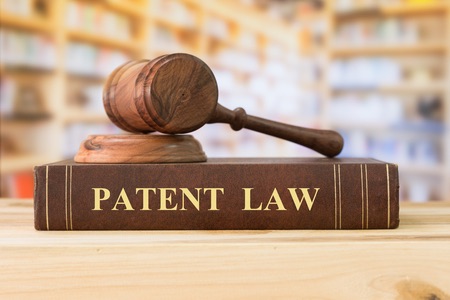This article is written by Pratap Alexander Muthalaly, from the Government Law College Trivandrum. This article studies the nature of patent law in relation to genetically modified organisms and other life forms. It analyses the numerous cases and judgments worldwide that have created a structure for patent law in regard to this specific area.
Table of Contents
Introduction
Since the discovery of the double-helix structure of DNA in 1953, there have been rapid advancements in genetic engineering and other life sciences. This has coincided with an increase in research commercialization, with thousands of patents being given for the rights related to DNA sequences. The latest point of contention however is, the patenting of life forms and genetically modified organisms.
The patenting of living organisms is unique for a number of different reasons: First of all, the invention itself is alive. That is, in some instances the invention in itself can reproduce. Moreover, it is not always the case that the invention can be adequately described for patent specification purposes. This has led to cases where parties have had to deposit the invention for patent purposes.
Why should life forms be patented?
While genetically modified organisms are living organisms, they do not necessarily occur naturally in nature. This fact was recognised in the famous American case of Diamond v. Chakrabarty,(1980) the U.S. Supreme Court declared that a genetically modified bacterium capable of digesting multiple components of crude oil is patentable with the reason being that—the claimed bacterium was not found in nature nor was its activity exhibited in any naturally occurring bacteria. The court also stated that the claimed bacterium satisfied the primary essentials for patentability, as it was a product of human ingenuity and intellect having its own distinctive name, character and specific use. The Chakrabarty verdict greatly increased patent activity in the field of genetic engineering. A number of patent applications were suspended pending resolution of the case, those and new applications have since been processed. At present according to the National Centre for Biotechnology Information (NCBI), there are roughly 500 applications related to genetic engineering pending and awaiting approval. Many more are awaited in the immediate future. As a result, patent activity in genetic engineering is increasing at roughly twice the pace of other similar technologies.
It must also be remembered that genetic modification is an expensive process and is also quite time-consuming, to say the least. As a result, if the creators behind genetically modified products are not allowed to reap the benefit of their creations, they will have little initiative and financial support to continue their research and thus the field will stagnate.
Patenting of life forms: legal and ethical aspects
A section of the scientific world argues that the risk involved in commercially applying scientific techniques can cause serious and irreparable damage to the environment. Some others view that patenting in such areas should not be allowed for the reasons of biodiversity preservation and rights of indigenous people. Some critics of cloning technology and organ reconstruction technology foresee the danger to nature as compared to its advantages. That is GM crops could cause naturally existing varieties to go extinct.
Furthermore, there is the question of whether patenting of genetically modified organisms is ethical. This issue first came to the forefront in the case of Myriad genetics and the patent it received over the breast cancer gene(BRCA). The company demanded a hefty 4000 dollars for testing, while the actual cost was only a fraction of this. Feeling this was unjust, the American Civil Liberties Union (ACLU) and a group of others sued Myriad genetics on the basis that their patents were on non-patentable material. The eventual ruling in the supreme court ruled in favour of the plaintiffs.
This however raised the crucial question of whether the individuals that discovered the gene mutation should receive any form of reward for their hard work. That is without being allowed to patent their products many companies would not even be motivated to do research in the first place. A counterpoint which was raised was whether it was right to restrict people from having access to lifesaving services, due to restrictive patents. Thus, arises the central question, what can be patented? The answer to this is that while things found naturally in nature cannot be patented, genetically modified organisms do qualify for patents. A perfect example of this is the genetically modified golden rice, which is quite popular in developing countries.
Another example would be Monsanto and the genetically modified corn they sell. While farmers can buy from Monsanto and use them, they cannot save or share the seeds.
What is a genetically modified organism?
A GMO, or genetically modified organism, is essentially a plant, animal, microorganism or some other organism whose genetic makeup has been altered through means like genetic engineering or transgenic technology. This formulates various combinations of plants, animals, bacteria and virus genes that cannot be found naturally in nature or through the commonly used conventional cross-breeding methods.
For thousands of years, humans have used a variety of different breeding methods to modify organisms to better suit their requirements. That is a variety of plants and animals like Corn, cattle, and even dogs and cats have been bred selectively over generations to have the specific traits that we humans deem as desirable. Off late modern breakthroughs in biotechnology have given scientists the requisite tools needed to directly modify the DNA of microorganisms, crops, and animals. The conventional methods of modifying plants and animals like selective breeding and crossbreeding take a significant amount of time. Moreover, these methods do not always provide the desired results, with there often being instances of unwanted or unpredicted traits cropping up alongside the desired characteristics. Meanwhile, the modification of DNA using biotechnology has provided an alternative solution to this problem. That is, scientists have devised a way to avoid this problem and continue improving the genetic makeup of the test organism without having to deal with finding ways to balance out the occurrence of unwanted characteristics or hindering features.
What all is included in the GMO patent?
One might initially assume that GMO patents are sought out primarily to protect GMO plants. While this view is partially accurate, there are other factors at play too. Basically, as long as the specific inventor discovers or invents a new plant in a cultivated state and is then able to progress to successfully reproducing it asexually, parties will be able to obtain a patent on the organism. Keeping this logic in mind, the US Congress passed the Plant Patent Act in 1930. This was primarily in response to the discovery of plant breeding and other new agricultural methods. Basically, via the new law, everything revolving around the making of new plant strains derived from crossbreeding was declared to be patentable. This was followed by the act later incorporating plants produced from modern biotechnological methods, such as integration of foreign DNA into plant genomes into the fold.
While examining all this, what is really intriguing though is that GMO companies in most cases do not really seek patents for their plants or its seeds. Instead, their primary goal is to obtain what we call utility patents, a totally different type of patent protection with much stricter controls with regard to the description of the invention. Utility patents are said to have numerous advantages and benefits when compared to plant patents. First of all, the scope of utility patents is not simply limited to plants and may cover many inventions beyond them. That is, if the creation of a GMO involves the integration of novel, foreign DNA into the specific plant genome, the uniquely designed DNA can also be offered protection by law through the provisions for utility patents. Also, it must be noted utility patents oftentimes provide much better protection for the patent hold against various forms of infringement. This was reflected most notably in the landmark judgment of Bowman v. Monsanto.
Why did Monsanto sue the farmers for infringement?
Monsanto Canada Inc v Schmeiser (2004) is a leading Supreme Court of Canada case pertaining to patent rights in the realm of biotechnology. The parties of this case were Percy Schmeiser, a Canadian canola farmer, and the agricultural biotechnology giant Monsanto.
While many believe that Monsanto sued farmers for selling its proprietary crops, when they had simply harvested their crops on the Roundup-contaminated land, this was not necessarily what had happened. According to Supreme Court records, one Percy Schmeiser, the main person of interest in David V Monsanto, had gone to great lengths to wrongfully procure the Roundup Ready canola plants that originated from his neighbour’s land. Then, by treating his crops with the Roundup that he had obtained, he was able to make sure for all purposes that only the resistant strains persisted. In the following seasons, he continued to replant the seeds without having the requisite licensing agreement issued by Monsanto, for farmers who bought and used their seeds. The unusually high prevalence (95-98%) of tolerant plants in Schmeiser’s fields was considered to be proof of blatant infringement in the eyes of the court, and hence Monsanto was able to claim a rightful remedy for its loss of profit, using this fact.
A similar case to this in the Indian context is that of Monsanto Technology LLC v. Nuziveedu Seeds Ltd. Here The Supreme Court of India, held that genetically modified cotton seeds were patentable, and accordingly declared that the U.S. company, Monsanto, was within their rights to file the aforementioned patent claims. This bench that comprised Justice Rohinton Fali Nariman and Justice Navin Sinha effectively quashed the earlier order of the Division Bench of the Delhi High Court, which had prior to the judgment held such claims did not apply in the India context.
Important provisions of the Plant Variety Protection Act
The Plant Variety Protection Act of 1970 (PVPA), is an intellectual property statute in the United States. The PVPA essentially gives all registered plant breeders up to 25 years of exclusive control over novel, distinct, sexually reproduced or tuber propagated plant species created or propagated via genetic engineering.
Essentially, the PVPA provides protection similar to that available through patents, however, these legal schemes differ quite a bit in some critical aspects.While plant patents are limited exclusively to asexually reproduced plants, the scope of the PVPA is much wider.
Notably, the PVPA provides a limited period of legal monopoly to breeders of sexually reproduced or tuber propagated plant varieties. Moreover, In order to be eligible for a certificate under the PVPA, a plant variety must satisfy four requirements:
- First and foremost, it must be new, that is, the propagated or harvested material must not have been sold or otherwise disposed of for purposes of exploitation for more than one year in the United States, or more than four years in any other nation (or six years in the case of a tree or vine).
- Second, the plant variety must well and truly be distinct, basically, it must be clearly distinguishable from any other publicly known variety. Distinctness may be based on one or more identifiable morphological, physiological, or other characteristics, including commercially valuable characteristics affecting activities such as milling and baking (in the case of wheat)
- Third, the variety must be uniform, with any variations arising being negligible in nature. Lastly, the variety must be stable, in the sense that, when it is reproduced, it will remain unchanged with regard to its essential and distinctive characteristics within a reasonable sphere of commercial applicability.
The Indian counterpart of this is the Protection of Plant Variety and Farmers Right Act, 2001 (PPVFR Act). The PPV&FR Act, 2001 was enacted with the goal of providing intellectual property rights to plant breeders, researchers and farmers who developed any new or unique plant variety.
GMO Patent Laws In India
In the case of India, prior to the 2002 amendment to the 1970 patent law, there was no real form of patent protection for inventions relating to life forms and genetically modified organisms. This changed after the Dimminaco A.G v. Controller of patent and design ruling. It was held by the Calcutta High Court held that a process for the preparation of vaccines containing the live virus is patentable since the term manufacture includes and is not limited to living organisms. It was held by the court that even if the end product contains a live virus, the process that was involved in bringing the final product to the fore can for all purposes be considered and classified an invention. The Monsanto Technology LLC v. Nuziveedu Seeds Ltd judgment further added to the case for GM and living organism patents. In this case, the honourable Supreme Court held that genetically modified cotton seeds were patentable, and allowed the U.S. company, Monsanto, to file their patent claims.
Conclusion
Genetic engineering and life sciences could possibly play a huge role in our continued advancement as a civilization. However, there are certain ethical and legal issues that have to be addressed and there will be a constant need to maintain a balance. That is we must find a way to both give adequate rewards and incentive to the creators of unique GM organisms and also ensure that this does not make the product inaccessible to the common man. In the case of India, there is still much work to be done in the area of GM related patents. That is, a systematic framework needs to be established to ensure that there are no loopholes in the law. While this has been achieved to some extent by India’s recently improved compliance with TRIPS norms, there is still a long way to go.
LawSikho has created a telegram group for exchanging legal knowledge, referrals and various opportunities. You can click on this link and join:
 Serato DJ Crack 2025Serato DJ PRO Crack
Serato DJ Crack 2025Serato DJ PRO Crack











 Allow notifications
Allow notifications



